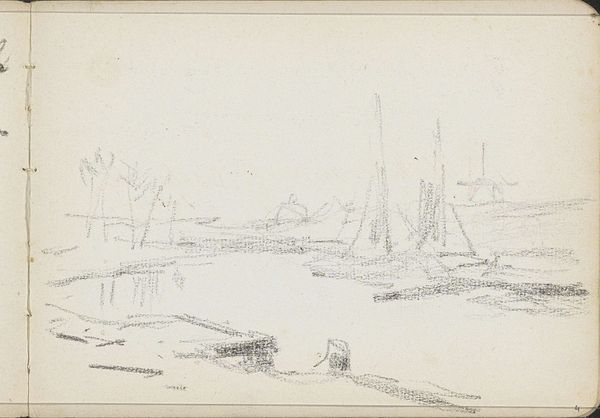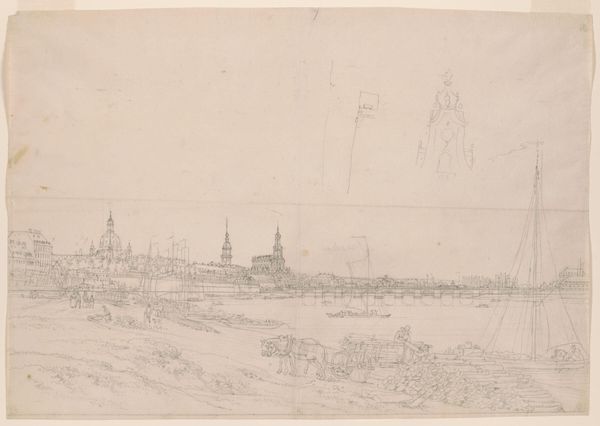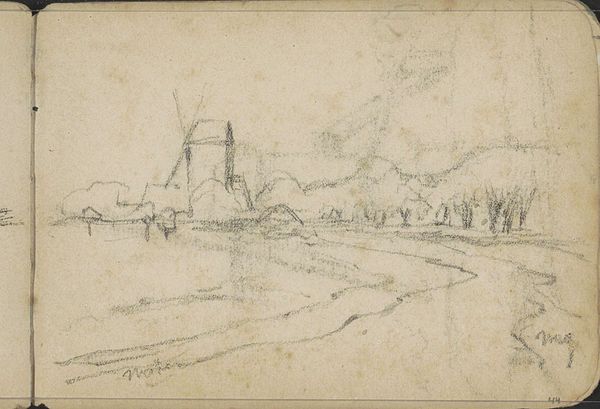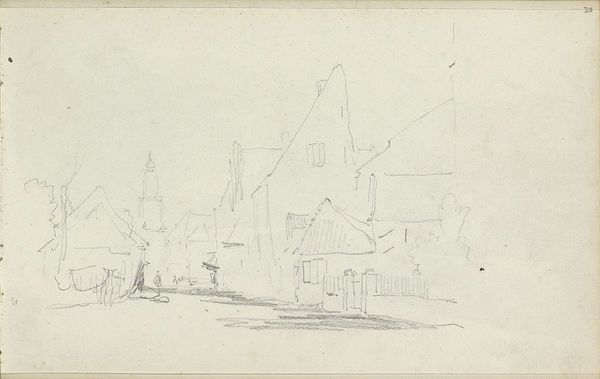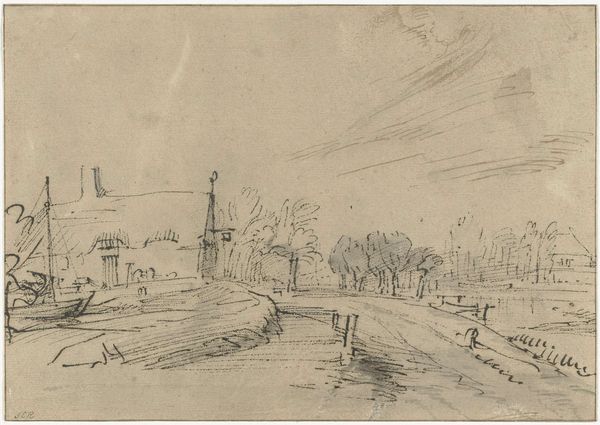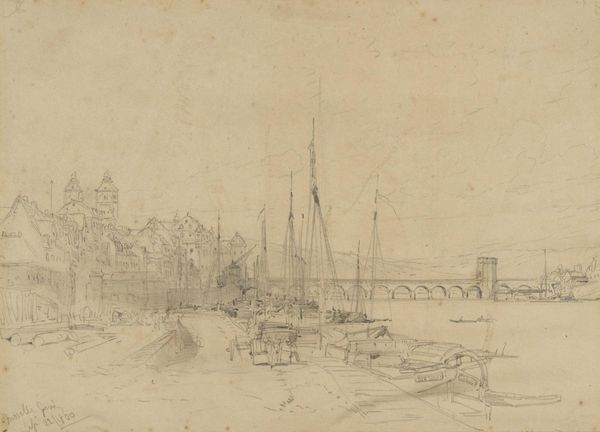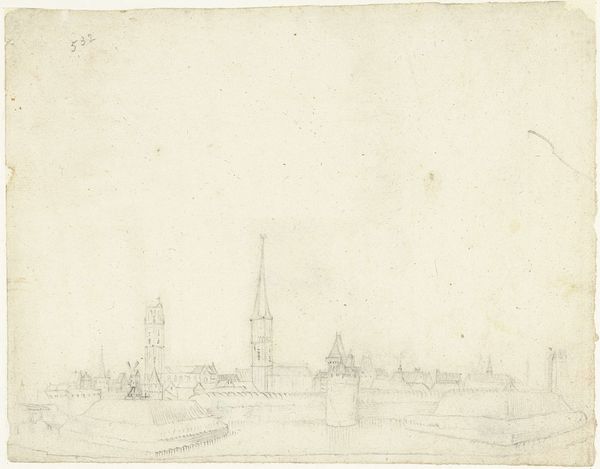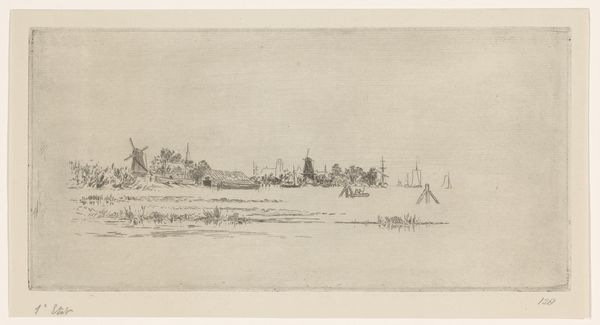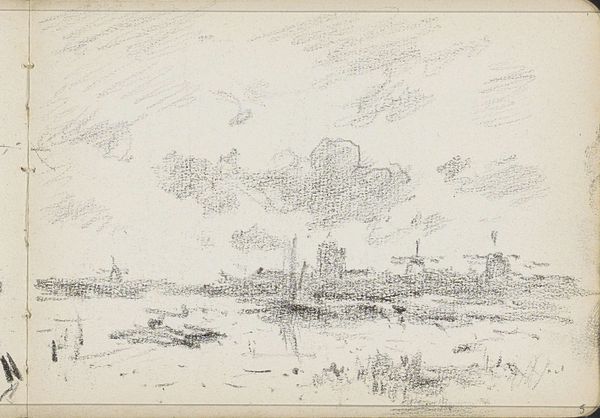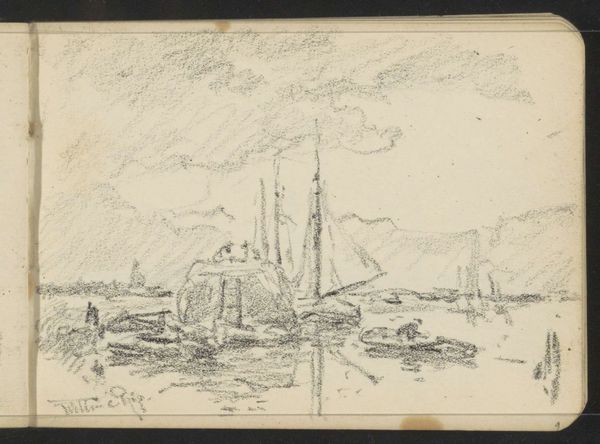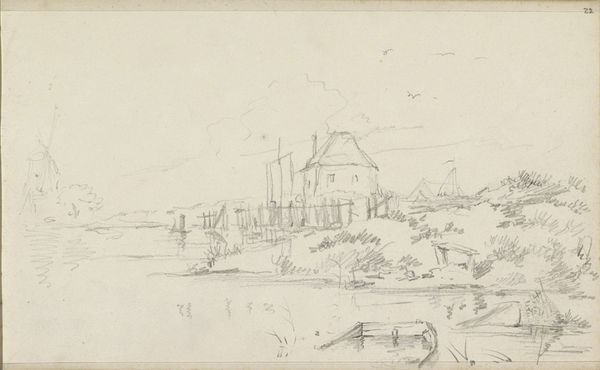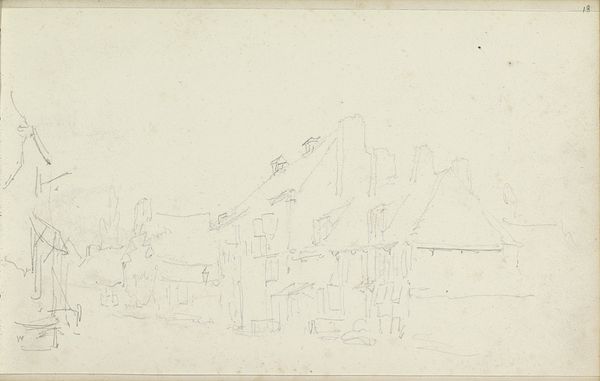
drawing, paper, pencil
#
drawing
#
landscape
#
river
#
paper
#
pencil
#
cityscape
Copyright: Rijks Museum: Open Domain
Curator: We are looking at “Stadsgezicht, mogelijk Kampen,” or "Cityscape, possibly Kampen," a pencil drawing on paper, made by Adrianus Eversen sometime between 1828 and 1897. Editor: It feels preliminary, almost dreamlike. There's a haziness to the whole composition that softens the industrial elements I'm seeing—particularly that smokestack in the distance. Curator: Yes, notice how Eversen manipulates line weight. The delicate hatching builds volume and defines the structures, from the windmill dominating the horizon line to the more roughly hewn sheds in the foreground. Semiotically, this speaks to a nuanced approach in representing spatial relationships. Editor: The roughness in those foreground structures catches my eye too. You can almost feel the texture of the weathered wood. I'm also intrigued by the marks along the water's edge; are they anchoring points? And who were the laborers constructing and maintaining these essential infrastructures of a 19th-century Dutch town? Curator: That question transcends pure formalism, venturing into the artwork’s possible context, but it’s true we could examine the implications of this focus. See how the artist plays with horizontality and verticality? The city unfolds linearly, grounded by the towering vertical accents of the windmill and that chimney. It's a carefully balanced composition. Editor: Absolutely. That interplay feels… intentional. What sort of paper do you suppose Eversen would’ve chosen? The smooth surface is paramount to translating such details, as it must faithfully pick up graphite subtleties under shifting pressure to conjure convincing material illusion and atmospheric depth. Curator: Fascinating to consider the selection in that regard. The image leaves us contemplating both its intrinsic visual elements and also that element of implied historical framework. Editor: Indeed, an insightful look into artistic production practices—from material procurement to labor economics.
Comments
No comments
Be the first to comment and join the conversation on the ultimate creative platform.
